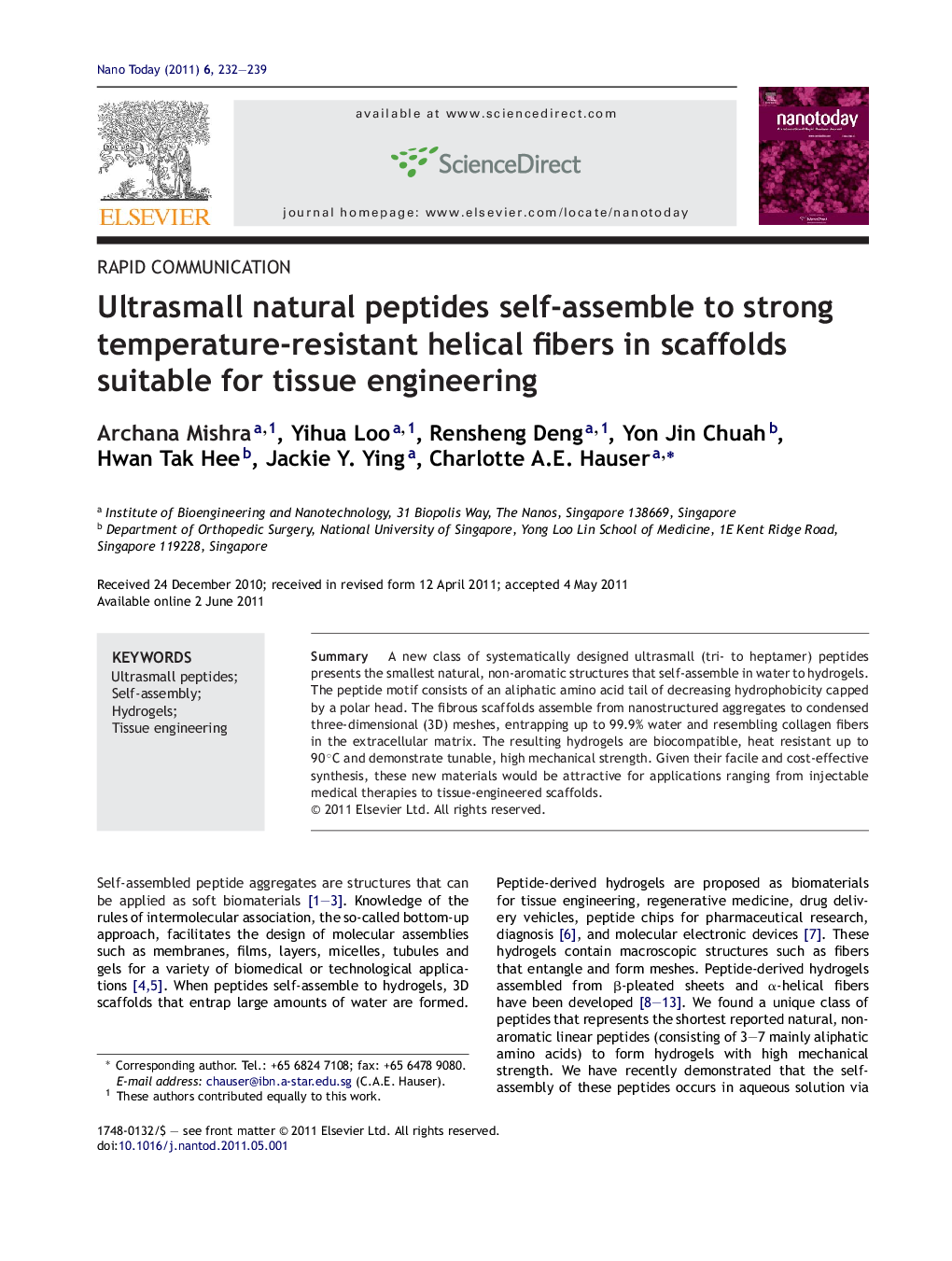| Article ID | Journal | Published Year | Pages | File Type |
|---|---|---|---|---|
| 32255 | Nano Today | 2011 | 8 Pages |
SummaryA new class of systematically designed ultrasmall (tri- to heptamer) peptides presents the smallest natural, non-aromatic structures that self-assemble in water to hydrogels. The peptide motif consists of an aliphatic amino acid tail of decreasing hydrophobicity capped by a polar head. The fibrous scaffolds assemble from nanostructured aggregates to condensed three-dimensional (3D) meshes, entrapping up to 99.9% water and resembling collagen fibers in the extracellular matrix. The resulting hydrogels are biocompatible, heat resistant up to 90 °C and demonstrate tunable, high mechanical strength. Given their facile and cost-effective synthesis, these new materials would be attractive for applications ranging from injectable medical therapies to tissue-engineered scaffolds.
Graphical abstractFigure optionsDownload full-size imageDownload high-quality image (348 K)Download as PowerPoint slideHighlights► Ultrasmall peptides (3–7 amino acids) self-assemble into hydrogels containing up to 99.9% water. ► Honeycomb porous microstructure with fibrous surface topology. ► High mechanical strength (elastic moduli of up to 90 kPa). ► Biocompatible with a variety of cell types. ► Ideal for tissue engineering applications, for example injectable therapy for degenerative disc disease.
